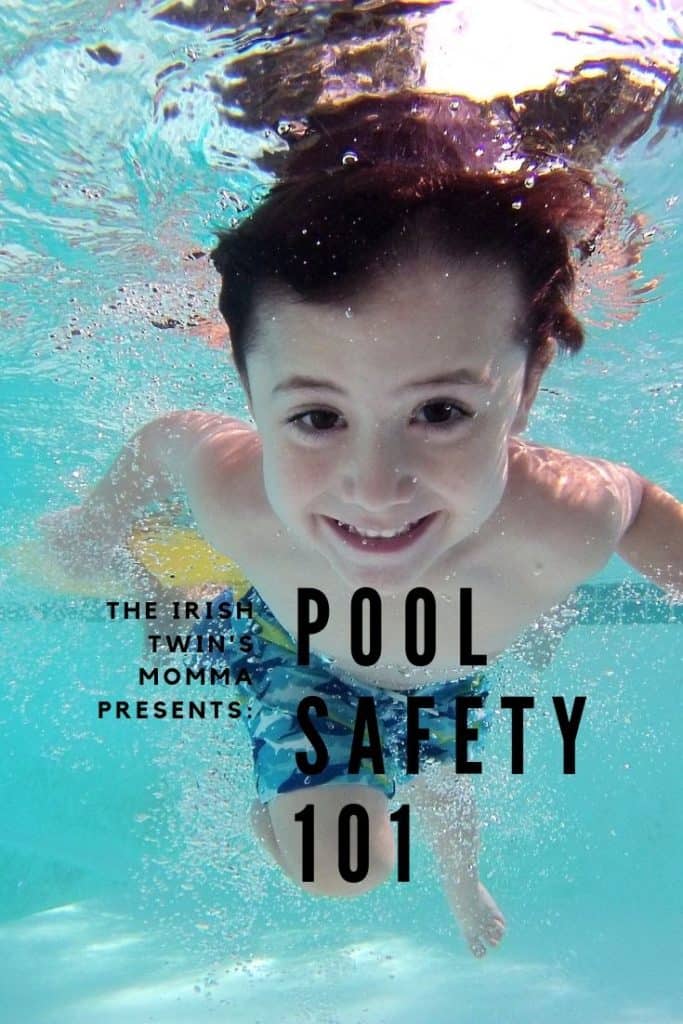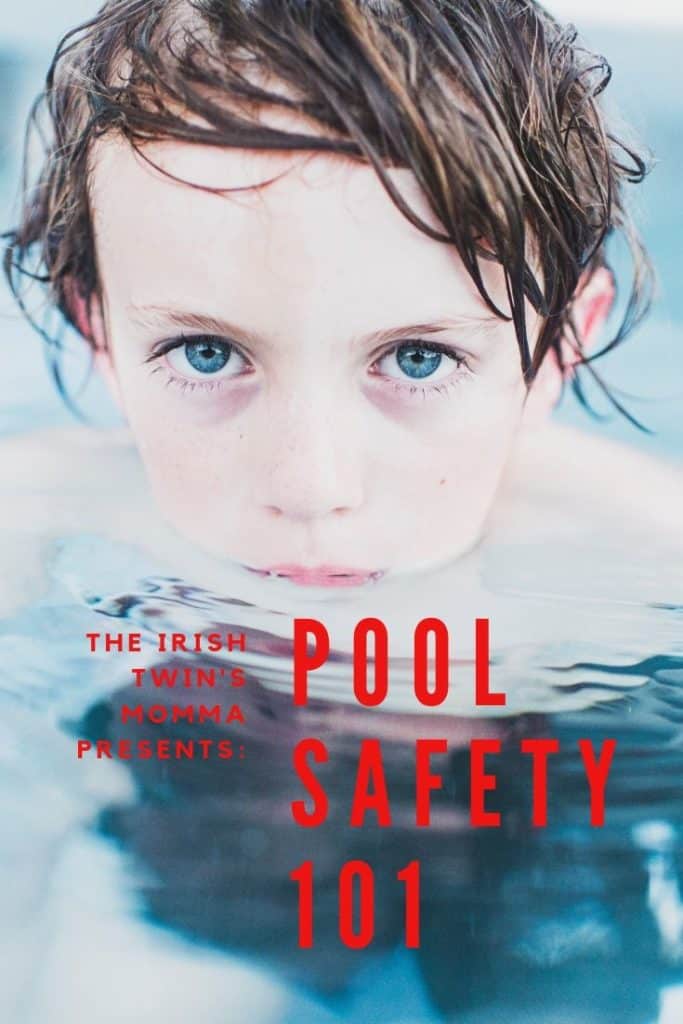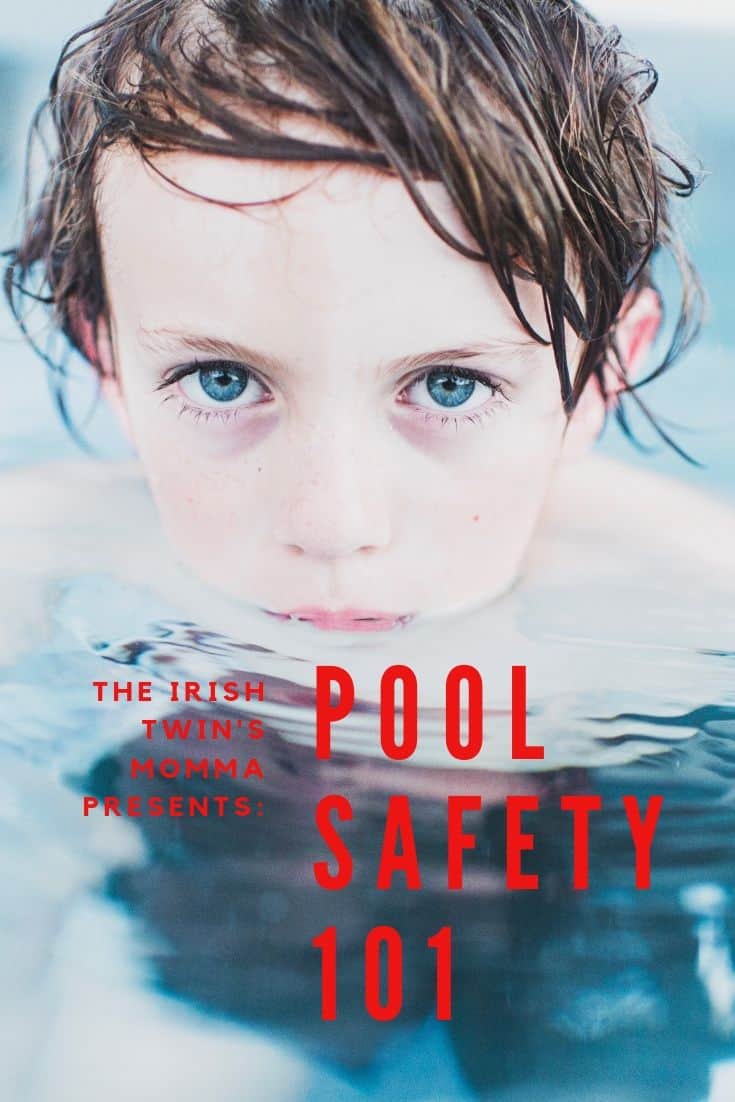This post contains affiliate links. If you click and buy, I may make a commission, at no cost to you. See my disclosure policy for more information.
June is National Safety Month, and with kids getting out for the summer, I thought it would be great to freshen up our safety skills around and in the pool.
I grew up with a pool in my backyard. I loved being able to walk out our back doors and take a swim. However, I started learning how to swim at the age of 3. At age 5, we moved into our house with a pool in the backyard. My father was not worried as much since we knew how to swim, but we were never allowed to swim without supervision, and the outside thermometer had to say greater than 80 degrees. Otherwise, we would catch a cold. Another rule was to wait 30 minutes after eating before being able to swim. However, this is a myth.
We now live in a neighborhood with a community pool. They always have lifeguards on duty when the pool is open, but they are there for emergencies, not babysitting or teaching your children how to swim. I have spoken to one of them, and they informed me that they couldn’t talk to others while on the stand as their eyes must constantly be on the water. This makes perfect sense, and I am so appreciative of this.
KNOW THE FACTS:
- In the United States, someone dies from drowning every 10 minutes.
- One out of every five drowning victims is a child, and for every child who drowns, another five children get hospitalized for a related incident dealing with water.
- Drowning is the No. 2 leading cause of death for kids aged 5 to 14 and No. 5 for all ages.
- Children with special needs face double the drowning risk of a typically developing kid, so parents must take the necessary precautions. Although kids with developmental disabilities have a higher risk of swimming-related accidents or injury, swimming and water play could be fun and therapeutic and shouldn’t be avoided.

POOL SAFETY TIPS:
Tip #1: Do NOT run, push, or horsing around the pool. Have the rules understood, and if the rules are broken, what are the consequences are.
Tip #2: NO glass of any kind should be around or in the pool area.
Tip #3: Do NOT dive into a pool that has a sign for no diving. This may sound like common sense, but most common spinal cord injuries result from diving into shallow water.
Tip #4: Do NOT drink alcohol around the pool, as it impairs your judgment and coordination.
Tip #5: Don’t let swimmers hyperventilate before swimming underwater or hold their breath for long periods, as they are at a higher risk of passing out underwater.
Tip #6: If you are young or an inexperienced swimmer, wear a Coast Guard Certified Life Jacket and keep it on until you are away from the pool area.
SWIMMING TRICKS:
Trick #1: Never swim alone, and always have a buddy in case of an emergency.
Trick #2: ALWAYS have active adult supervision. I leave out the sunscreen, towels, snacks, and water all before hopping into the pool that way, I don’t have to take my eyes off the water.
Trick #3: If the adult must leave the pool area, so do the kids. I instilled this in my boys just recently.
Trick #4: Never assume and be aware of your surroundings, including every child, as seconds count. It only takes a second to start drowning, and it is silent.
POOL SAFETY IDEAS:
Idea #1: Secure pools with appropriate barriers. It is best to install a four-foot or taller fence around backyard pools and use self-closing and self-latching gates that open away from the pool.
Idea #2: Consider door safety alarms if your door opens directly into the pool area. Using a surface wave or underwater alarm will also give you added protection from accidental falls into the pool.
Idea #3: Empty portable pools when not in use and store them away. Children can drown in as little as one inch of water.
Idea #4: Never leave floats or pool toys around, as they can block your view and be a trip hazard.
Idea #5: Keep a first aid kit, life preserver, and phone around should you call 9-1-1.

CLASSES YOU CAN TAKE TO FRESHEN UP YOUR POOL SKILLS:
The National Swimming Pool Foundation offers some great classes, some strictly online for pool and spa operators to aquatic risk management.
The American Red Cross offers swim lessons and water safety classes for all ages. They also offer CPR classes that will fit just about anyone’s schedule. Find a location near you today, as with practice, you may be able to save a life.
Every second counts! I hope you all have a wonderful, safe summer!
Other posts you may like are Momma’s Pool Bag, where there is a printable version of a list of everything you would need to have a safe summer by the water.


Rachael
I worked as a swimming instructor for many years and I would add: when your children are old enough, teach them how to be rescued (don‘t panic, float on back, learn how to be pulled in to safety) and teach them to rescue someone without getting wet (eg lie down on the side of the pool and use a broomstick or similar to pull the person to safety at the side of the pool and talk to them the whole time). When adults drown, quite often it is because they jump in before assessing the dangers to themselves. Self preservation with rescues can be taught young. Also, watch out for buckets of water – it is enough to drown a small child if the overbalance.
irishtwins16
Yes! Even an inch of water is enough for a small child to drown. Thank you so much for contributing this.
Lisa
Water safety is so important. Thanks for putting this information out there. I’ve never been a good swimmer. My kids are ages 8 to 16 and I still won’t allow them into water if I’m the only adult around. My husband is a very good swimmer, though, so he’s the one in charge of in water supervision and safety and I’m more of a lookout. We don’t have a community pool, so we usually have to visit friends or go to a natural swimming area if the kids want to swim. I’m going to look into those classes offered by the red cross though; I feel that is a really good idea for practicing preparedness and improving swim skills.
Britt
There are some great tips here! When we moved into our current home we knew that having a pool was a huge bonus, but also a BIG responsibility. There are rules that we strictly enforce, such as the no glass in and around the pool, etc. Also no child is allowed out in our fenced back yard without an adult right there present with them because it’s not worth taking the chance!
Ashley M Havecker
Very good rules!
Denise Abler
We have an above ground 14 ft pool. You have great tips here for kids and adults. My mom never learned to swim and made sure my brother and I learned to swim.
Ina
It sometimes baffles me how much we don’t consider when it comes to pool safety, or any water safety for that matter! My kids are on a summer swim team, so they swim quite well, but people don’t consider the dangers. I’ve watched so many people just drop their kids off at the pool expecting the lifeguards to take care of anything and everything. This is utterly ridiculous because, as you mentioned in your excellent post above, the lifeguards cannot take their eyes off of the water! It becomes such a safety concern. I also have had friends learn the hard way that they cannot leave even the little kiddie pools filled with water in the yard because of the hazards involved. Thank goodness their kiddos did not die, but they were hospitalized for a time for water inhalation. Thank you for the wonderful advice and awareness!
Rebecca Hindman
This is SO important! ISR is another great teaching source for pool safety for little ones. I hate watching people put life preservers on their kids, throw then in the pool and walk away. They can still drown! My daughters were brought up around pools, swim/swam competitively, and play water polo. swim safety is huge in our house! Thank you for sharing.
rikki
So glad to see this post! I didn’t learn to swim until high school gym! Now with a toddler, I was so nervous to have him out in the water this summer. These are really great rules we’ll definitely be implementing